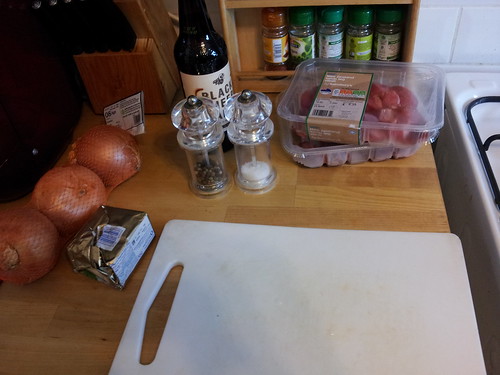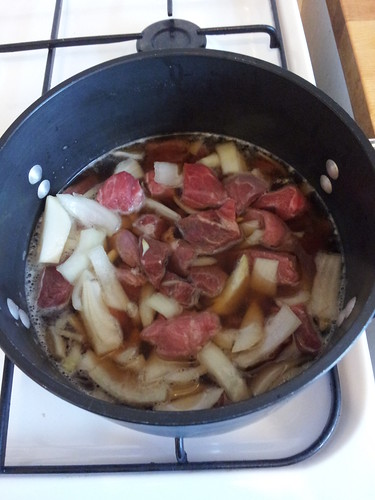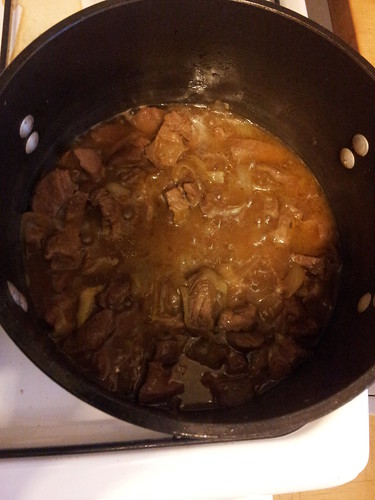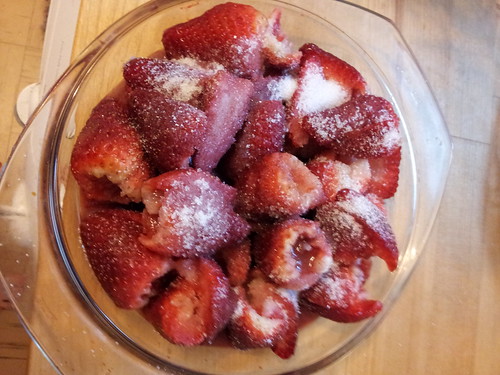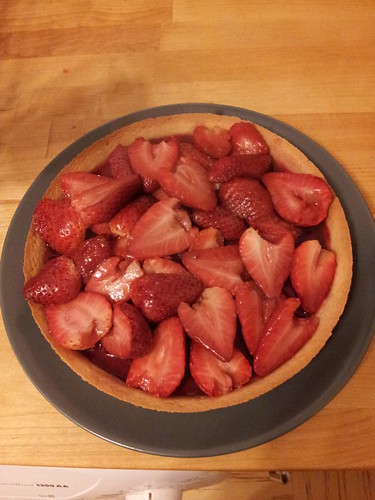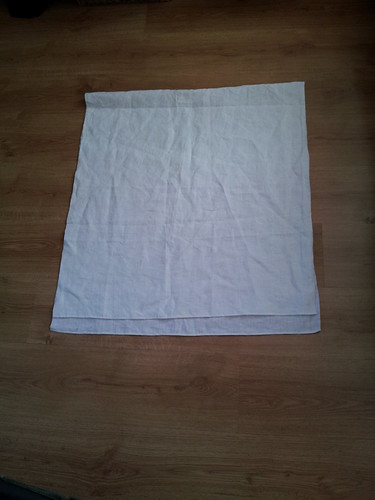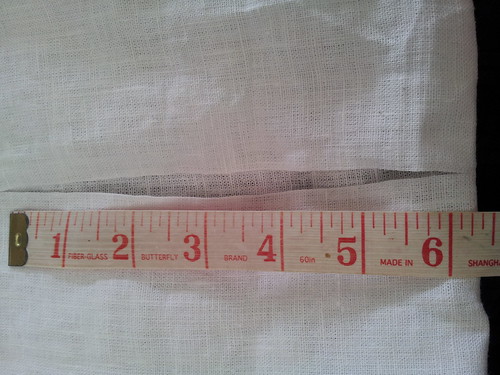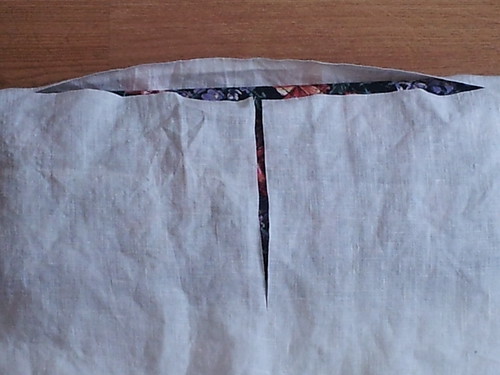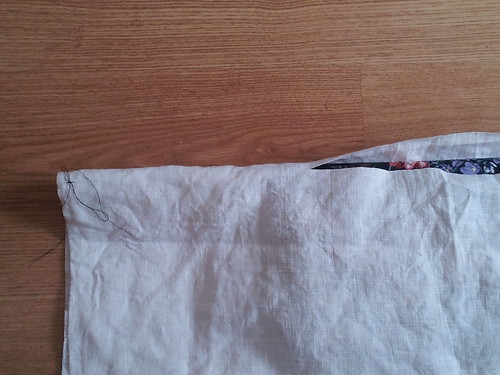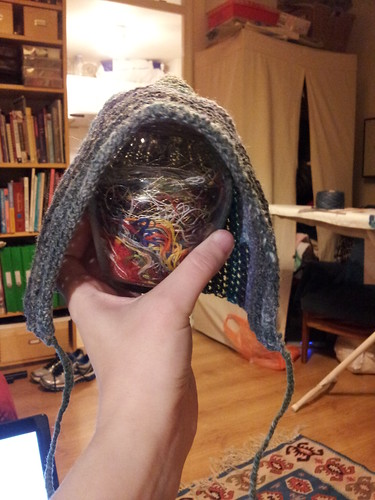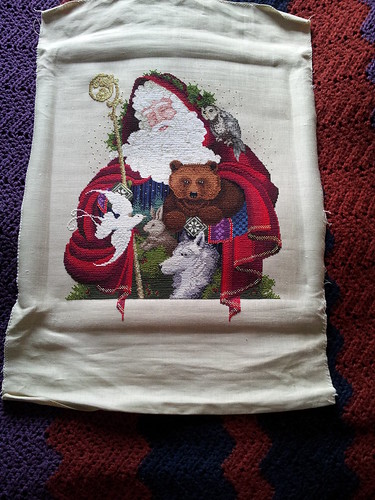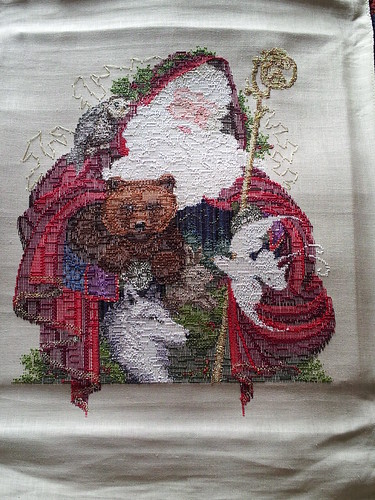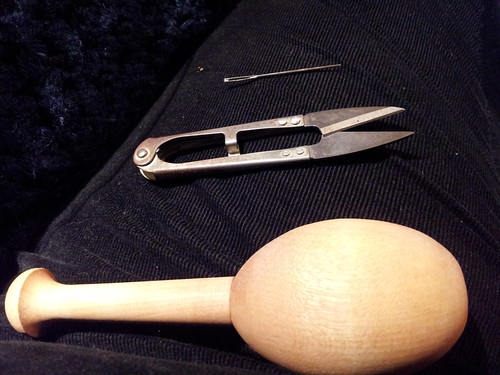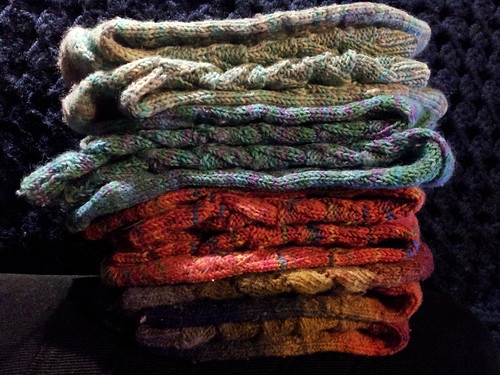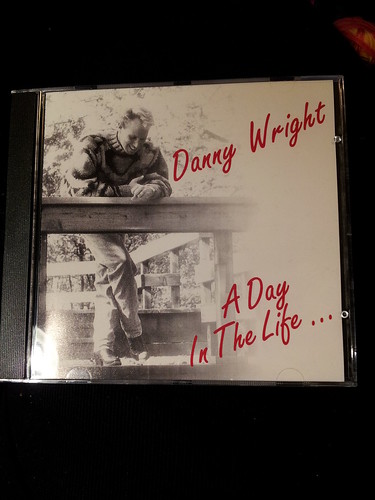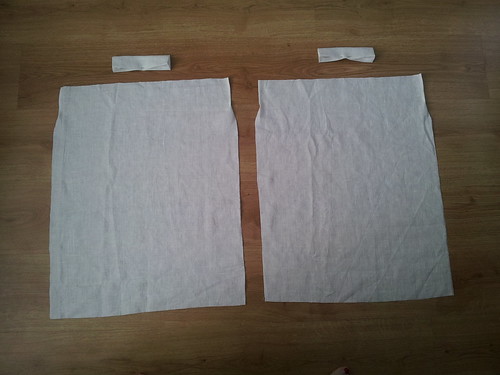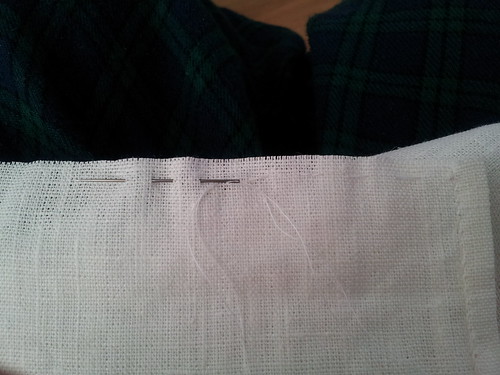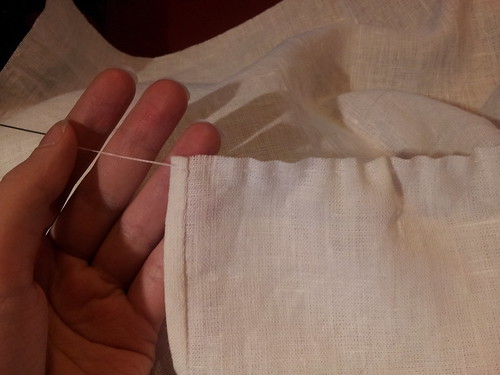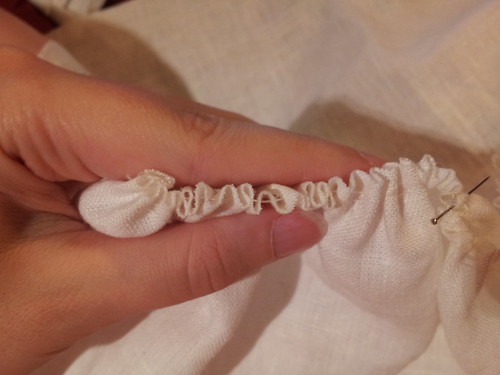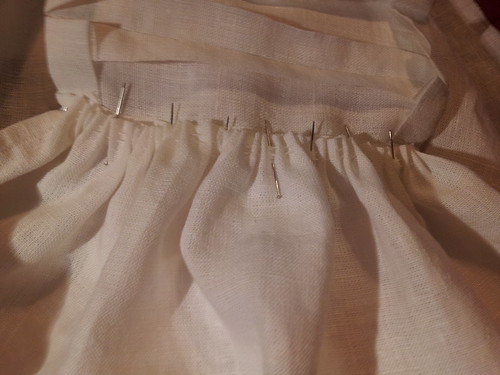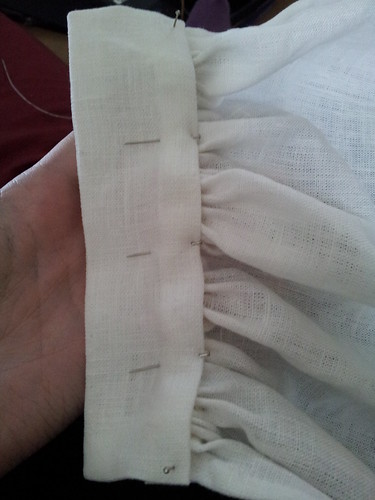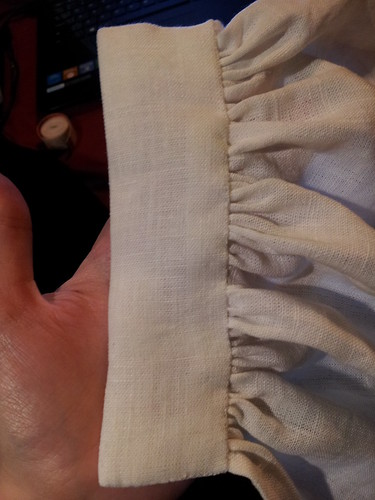Neck gussets are little right triangles of fabric sewn into the short sides of the t opening of the neckline. (Quilting types, these are half-square triangles.)
Cut a square of linen that's about 3.5 inches on each side.
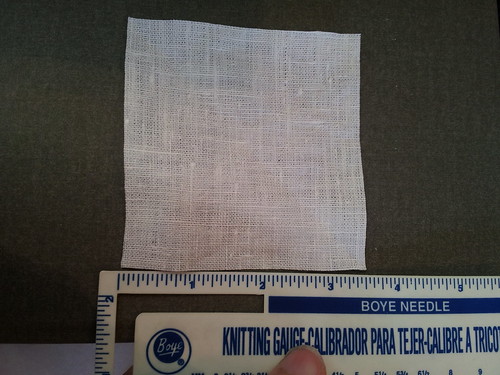
Fold in half corner to opposite corner, finger-press the fold line, open it back up and cut along the fold line. You now have two triangles.

Working on the RIGHT SIDE of the shirt body, lay the first triangle up against the side of the cut in the shirt as shown below. The right angle of the corner is at the end of the cut, about half an inch below it. This is deliberate: you need a seam allowance here.

Starting from the end farthest from the bottom of the cut, sew the first side of the triangle to the shirt using very small running stitches. Make sure you start about half an inch in from both sides of the triangle.

The next step involves some fabric gymnastics. Basically, the side of the triangle that's pointing away from the slit in the photo above (the one where it hasn't been sewn down yet) needs to be attached to the other side of the slit. You can do this by easing around the corner, but it's a pain and never comes out perfectly square. Instead, I do this. First, park your needle over by the neck hem so you don't stab yourself, then fold the triangle in half so that the two short sides are on top of one another.
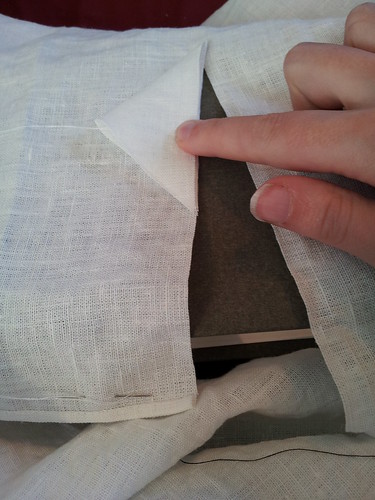
Next, fold the shirt body along the shoulder "seam", right sides together. You now have a fabric sandwich with the doubled triangle inside the front and back of the shirt.

Being careful not to let the triangle slip, pin the unattached side of the triangle to the side of the slit. If you open up the sandwich slightly, you should find you have a v-shape with a layer of shirt and a layer of triangle on each side, triangle innermost.

Next, open up the sandwich and push the tip of the triangle into the centre of the sandwich.

Unpark your needle and sew the rest of the way around the triangle. You won't be able to maintain the half-inch seam allowance as you go around the corner. If you try it, the fabric bunches up and looks ugly. Ease it in gently and it should be smooth on both the wrong:

and right sides:
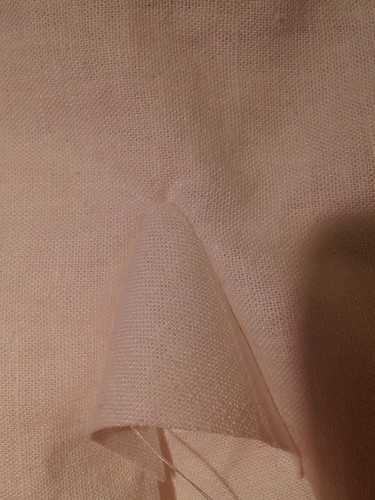
Once the gusset is in place, the insides of the seams need to be finished. Extant shirts have felled seams here, so that's what I do. First, clip away the unsewn corners of the triangles, leaving enough fabric that the seam doesn't rip out.
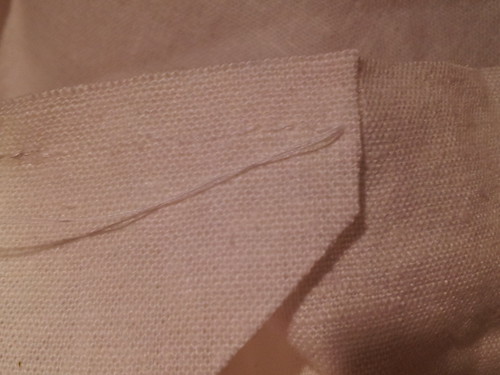
Next, clip away about half of the seam allowance on the shirt, NOT on the triangle. Angle in from the outer edge of the slit on both sides so that you have a smooth line going into the seam, and when you get to the narrower seam allowance at the corner, don't clip it.

Fold the seam allowance over on itself twice and finger-press, as though you were hemming it, but tuck the clipped edge of the shirt into the folds so that the full seam allowance wraps around the clipped seam allowance. Whip the edge down exactly as if you were hemming.

No funky mitered corners: just work along one side, then fold the other side under to make a nice, square corner. Fasten off your thread and admire your gusset.

And the right side:
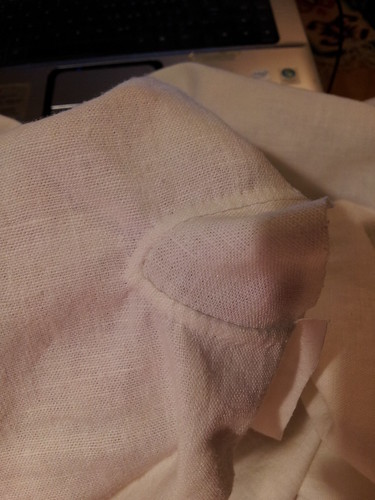
Now go put in the one on the other side!
